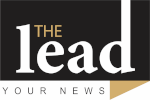A predictive electoral poll has predicted a victory by 9% points for Labour Party’s presidential candidate, Peter Obi in a high-turnout scenario while a tighter Asiwaju Bola Tinubu’s victory in a low-turnout election.
The poll conducted by top-rated Nigerian intelligence company, Stears, noted that Obi is the candidate that achieved at least 25% of the votes in five out of the six geopolitical zones while Tinubu of the All Progressives Congress, APC, had 25% of the votes in four zones, Alhaji Atiku Abubakar of the Peoples Democratic Party,PDP, recorded 25% of the votes in two geopolitical zones.
The only region where Obi failed to secure 25% of the vote, according to the survey, is the North-West, where the presence of Rabiu Kwankwaso of the New Nigeria Peoples Party, NNPP means that votes are most evenly split in the region, noted Stears.
- 2023: Festus Keyamo reacts to Bloomberg Poll conducted for Presidential Aspirants
- 2023: I will bequeath legacy of credible poll — Buhari
However, Tinubu holds a healthy lead in Kwara State, which is considered a swing state and has successfully predicted the results of each Presidential Election since 1999.
“Simple analysis of the poll results puts Peter Obi in the lead with 27% of all votes, ahead of Bola Ahmed Tinubu (15%) and Atiku Abubakar (12%). This is aligned with the results of other polls; however, it is hard to draw definite conclusions without examining the large portion of respondents who do not provide a candidate preference—a proportion as high as 50% in previously released polls. Where other polls have been inconclusive due to the large share of silent voters, Stears’ proprietary model is able to provide answers by predicting the most likely candidate for silent voters,” explained Michael Famoroti, Head of Intelligence & Co-Founder at Stears.
According to the pan-African data company, the Stears poll is the largest public opinion electoral poll on the 2023 Elections with 6,220 Nigerians polled. The sample was randomly stratified by state and gender to mirror the distribution of registered voters in Nigeria. All 36 states and the FCT were polled.
Stears also noted that it developed a proprietary estimation model that predicts likely voting patterns for silent voters within the data set, enabling comprehensive forecasts of the 2023 presidential elections.
It added that a predictive model was necessary to make sense of electoral polling data because a substantial portion of voters surveyed in 2023 electoral polls declined to reveal their preferred presidential candidate.
A December 2022 ANAP poll showed that 52% of voters were undecided or chose not to reveal. In the Stears’ poll, 37% of voters did not reveal their preferred candidate. Data from Stears’ polls showed that silent voters are unevenly spread across demographics, pointing to the need for more nuanced analysis. For example, voters in the South East are most willing to reveal their preferred candidate, while women, in general, are more reluctant to declare their preference.
Stears’ predictive model analyses the stated preferences of the transparent voters and the revealed preferences of silent voters to estimate the most likely preferred candidate for each silent voter. Even though the model assigned 43% of undeclared votes to Tinubu—suggesting most silent voters are Tinubu supporters, Obi is still the predicted winner when the reassigned silent voters are added to the declared voter count.
“To take the analysis further, Stears defined a high-turnout scenario and applied it to the prediction model. The high-turnout scenario includes all respondents that declared an intention to vote, except those that had not yet collected their PVC or did not say they were certain to vote. In this case, Obi gets 41% of the vote (Figure 1.4), holding a comfortable lead over Tinubu, based on the model’s predictions. The high-turnout scenario corresponds to a turnout of roughly 80% on the day
“The low voter turnout scenario must also be reckoned with, particularly because the path to casting a vote that is eventually counted by INEC is fraught with risk. The low-case scenario only includes respondents that meet the following criteria: They have their PVC, they state they are certain about their chosen candidate, they feel very confident in the electoral process, they are sure they will vote, and they feel safe or very safe going out to vote. In a low voter turnout scenario, Tinubu edges the vote. The low-turnout scenario corresponds to a turnout of roughly 28% on the day,” it noted in a statement released on Tuesday.
The survey also discovered that religion ranked the lowest among eight factors that influenced the choice of respondents. It ranked lower than the choice of running mate.
“We can analyse data sets from various sectors, but election data is particularly interesting because it is freely available. We started with Stears Elections, an open data project designed to organise all of Nigeria’s election data. In 2019, we built Nigeria’s first real-time election database, and now in 2023, Stears Elections is the most granular way to track all live election results for the Presidential, Gubernatorial, National Assembly, and State Houses of Assembly elections. Ahead of a pivotal moment for the country, there is no better time to apply our analytics expertise to our proprietary election polling data,” says CEO Preston Ideh.





